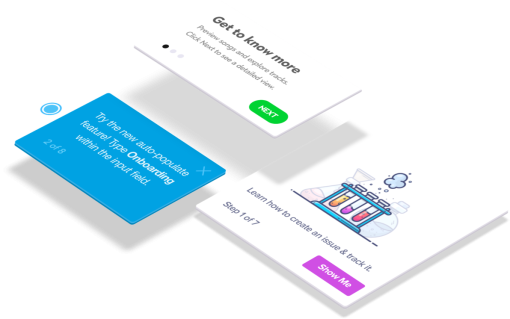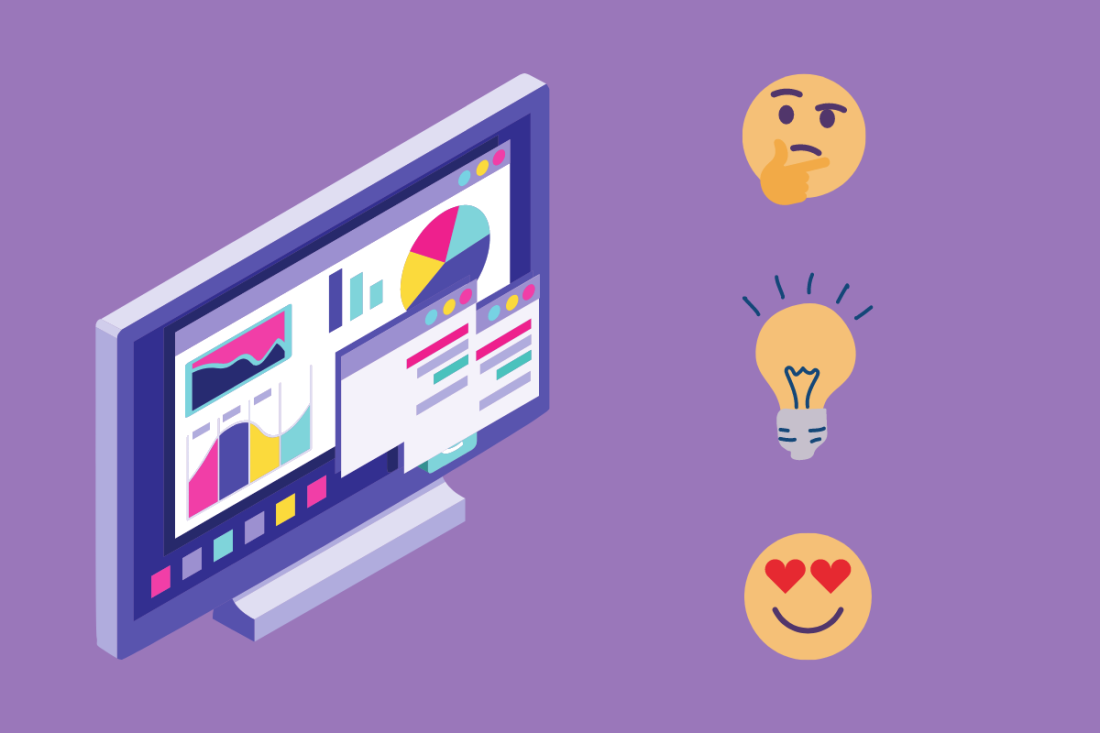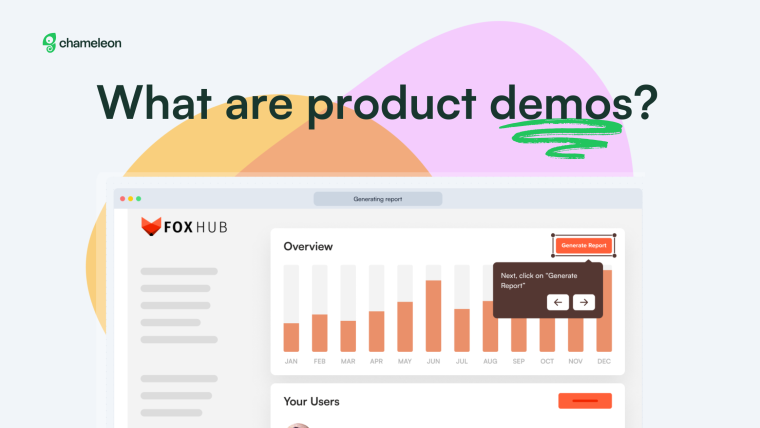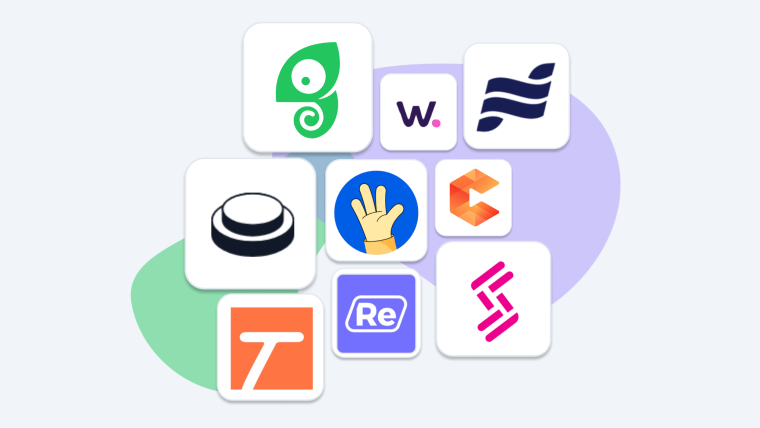Freemium models are like free samples at a fancy grocery store—tempting users to try a little bit, and hopefully reel them in for the full experience.
It’s a great way to attract new customers, but the challenge is knowing how much to give away and when to make the upgrade pitch.
So, how do you get it right? We're spilling the tea on how to make the freemium model work for your product and turn those free users into paying customers.
What is the freemium model?
Freemium is a business model that offers a product or service for free with basic features. It’s designed to attract users to the free version and eventually convert them into paying customers. You’ll often see freemium models with things like:
Storage limits: Slack restricts access to message and file history after 90 days.
Feature limitations: Trello allows up to 10 boards per workspace.
Advertising: Spotify plays ads for free users, but removes them for premium subscribers.
Cross-selling: Google lets you use all the apps in G-suite and store every doc you create in a personal drive, for free. Once you exceed the 15 GB storage limit, it’s time to pay for more space.

In its pure form, the freemium revenue model lets users access the product indefinitely with limited functionality. However, it can shapeshift into a reverse trial, where users start with full access for a limited time and are downgraded to a free, limited plan once the trial ends. While this may seem similar to other types of revenue models—like free trials—freemium is different enough to be a standalone model.
Free trials offer full functionality for a set period. After that, users either automatically continue with a paid subscription or choose to subscribe (more on these rascals in a sec).
As opposed to freemium models, a free trial is like an all-you-can-eat SaaS buffet. You get to try everything on the table in a set time period—then you decide if you want to stick around for good.
These pricing strategies can help you achieve different business goals. Here’s when to choose which, based on your objectives. ⬇️
How to select a revenue model based on business goals
With a freemium business model, your company could turn:
13.33% of your visitors into users
Almost 4% of freemium users into paying customers
Free trials are more effective in converting trialing users to paying customers, but not as effective in convincing visitors to become users:
7.8% of visitors sign up for a free trial
17.8% of free trial users become paid users
And that's if you don't require payment information to sign up (opt-in free trial). If you do (opt-out free trial), your trials might yield different figures:
2.4% of visitors become users
Almost 50% of free trial signups transform into paying customers as the free trial automatically converts into a paid subscription once the trial period is over
Take the 50% conversion rate with a grain of salt. We've all forgotten about a free trial and ended up paying a month for a premium subscription we didn't really want. Chances are, a lot of those users canceled their subscriptions or requested a refund. In fact, 40% of users who converted through an opt-out trial bailed out on their premium subscription.
Choose a freemium pricing model if your goal is to build a larger user base and you're okay with a slower path to converting paying customers. But if you’re focused on getting more paying users quickly, a free trial might be the better option. Just be sure to pick the trial type that aligns with your business values.
Opt-in free trials tend to attract more engaged users, while opt-out trials may boost conversion numbers but risk higher churn once people realize they’ve been auto-enrolled in a paid plan.
Benefits of the freemium pricing strategy
A freemium strategy can help you achieve a lot with minimal marketing intervention. Its benefits include:
Rapid user acquisition
With no upfront cost, you’re removing the friction for users to dive right in. It's like offering them the front-row seat at a concert, for free!
The easier it is to try, the faster you’ll have users piling in to give your product a spin. More users means more data, feedback, and a faster path to optimization.
Market penetration
When you're looking to conquer the market, freemium is your Trojan horse. It sneaks into all the corners of your target audience with minimal resistance. Offering a free version lowers the barriers and gets your foot in the door across different segments and geographies.
The strategy?
Quietly expand your reach while users get hooked on your product and can’t imagine life without it.
Demonstrating value
A freemium model is where you can let your users sample all the value they’re going to achieve with your tool and nudge users towards their “aha moment”—the moment when they truly understand why your product is so great and are convinced to upgrade for premium services.
Freemium products with no time limit give people the chance to settle in, share it with their team, and make it a part of their routine without the pressure of a ticking clock.
Viral growth potential
The freemium model can help you viralize your product. To increase the chances of viral growth happening, keep those features that can get you word-of-mouth and referral traffic free forever.
These core functionalities are the MVP features you launched when you first identified a gap or problem in the market. They're the heart of your product—the tools or solutions that solve the issue you set out to address. Keeping them free ensures your product stays accessible and relevant, encouraging users to spread the word and create growth loops.
The growth loops will then do all the heavy lifting for you without you needing to invest any money into user acquisition.
By the looks of it, slow and steady wins the upgrade race, right? Not always. There are downsides to freemium as well.
Challenges of the freemium model
The side effects of giving your product for free may include:
Low conversion rates
Not everyone who snags a freebie is going to whip out their credit card when you ask for it. In fact, conversion rates can sometimes feel like searching for gold at the end of a rainbow: elusive.
Sure, you’ll have a lot of users, but only a small percentage of them will take the plunge towards premium. Prepare for lots of window shoppers!
High support costs
Keeping costs down is vital for your freemium service. You can’t invest time and money into holding free users’ hands.
Offering a free version opens the floodgates to an influx of users who might need onboarding assistance. Those support costs can pile up fast, and every question eats into your resources.
You’re practically running a help desk for free users who aren’t even paying for the service. Yikes!
Potential devaluation
The freemium model’s double-edged sword: while it’s great for increasing your user count, it can make your product seem less valuable. After all, if people are getting the core experience for free, they might start thinking: Why would I pay for this?
The risk is that your premium features become harder to justify, and your product might start feeling like the Dollar Store version of its true potential. You’ve got to be careful not to give away the farm while still keeping your premium users hungry for more.
Strategies to make the freemium model work
Freemium is not all roses, but it does offer enough benefits to be worth a try. To minimize the potential negative effects the freemium model can have on your business, make sure to:
Optimize user onboarding experience
Highlight premium features
Personalize upsell messages
Simplify the upgrade process
Analyze user behavior and feedback
Here’s why.
Optimize user onboarding experience
Users need to be guided through freemium products so they can experience their “aha moments” as soon as possible. To do this, you can make use of in-app onboarding tours that show users key features, which will decrease the time-to-value.
Highlight premium features
Use add-ons to help users understand the benefits of your paid plans. This might allow users to pay to add teammates to their workspace for a small fee, say $5 a month. It’s a minimal fee but it enables them to taste the value they’d get from your full product suite.
Personalize upsell messages
Delivering personalized upsell messages at the right moment will help you convert more, faster, and at a lower price. According to McKinsey, personalized messaging can help you slash your customer acquisition costs in half.
Make use of automated email campaigns, website personalization, and social channels for an always-on approach that adapts to your users’ onboarding flows.
If you know that certain users haven’t taken key actions, then you can follow up with them and nudge them in the right direction—switching to a premium plan.
Simplify the upgrade process
A happy freemium customer can stay that way forever. However, when you clearly communicate the benefits of your paid tiers, users are more likely to explore those premium features.
Instead of keeping paid features behind a wall, offer users a sneak peek at the benefits. A simple upgrade message can give them a glimpse of what’s waiting for them—perhaps with a video or brief explanation. This way, users can interact with and discover the sparkly premium features before committing to the upgrade.
Analyze user behavior and feedback
To truly make the freemium model work, it’s crucial to understand how your users are interacting with your product. Regularly analyze user behavior to spot patterns—what features are they engaging with? Where are they dropping off?
Leverage this data to optimize your product and tweak the user experience. Collect feedback through in-app surveys to understand user needs and pain points. The insights you gain will help you refine your freemium offering, improve conversion rates, and keep users engaged and happy.
Measuring success: freemium conversion rate
Freemium isn’t for everyone. Some telltale signs that freemium isn’t working for you are:
A lower than 1% freemium conversion rate
Referral traffic is a near-zero figure
High churn rates of paid customers (they didn’t see the value in the leap from free to paid)
Negative NPS Microsurvey results
Spending more money on acquisition than lifetime value
Other products providing extremely similar solutions with more freemium features
So how do you know if it’s working? How do you measure success?
The average SaaS freemium conversion rate is 1–2%. That means one or two out of every hundred free users become paying customers. But you should aim higher.
To improve this, focus on reducing customer acquisition costs (CAC) and boosting lifetime value (LTV). Here's how:
The 3:1 SaaS Ratio
Your LTV to CAC ratio should be 3:1 for growth—especially in freemium models, where you’re paying to acquire free users.
If you're spending $20 per free user, and 2% convert, you’re paying $1000 per customer. Their LTV needs to be $3000 for success. To lower CAC, rely on free channels like word-of-mouth or viral loops.
Learn more about the LTV:CAC ratio from Kieran Flanagan, VP of Marketing and Growth at Hubspot. 👇
Closing the Penny Gap
The Penny Gap is the hurdle between a free product and a small paid tier. It’s harder to get a free user to pay a penny than to upsell a paying user. Founder of ProfitWell, Patrick Campbell, explains how to reduce this gap and move users up the ladder.
Over to Patrick Campbell, Founder and CEO @ ProfitWell, to explain how to reduce the Penny Gap in more detail. 👇
How Chameleon can help boost your freemium model success
In the end, the freemium model works best when you can clearly showcase the value of your product and convince users to upgrade to a paid plan. It’s all about giving away enough value to hook them, but also engaging them with in-app messages and prompts that remind them of the benefits they could gain from the premium version.
Sometimes, a gentle nudge is all it takes to turn freemium users into paying customers.
To boost your freemium conversion rates, consider using a platform like Chameleon. With its no-code, easy-to-use interface, Chameleon lets you personalize in-app messaging, target users with the right prompts at the right time, and optimize onboarding experiences that drive conversions.
It’s a seamless way to guide users through their journey, show them the full potential of your product, and increase engagement without needing any technical expertise.

Create in-app experiences that retain and convert users
Chameleon makes it easy for product marketers to create tooltips, modals, and product tours without code





